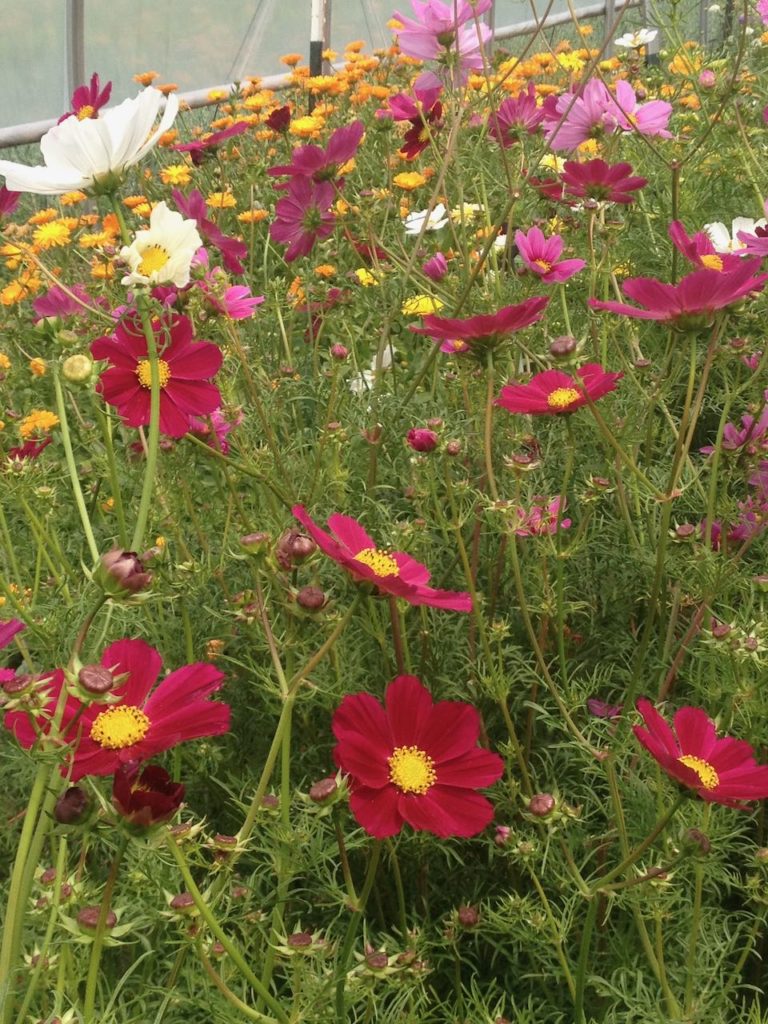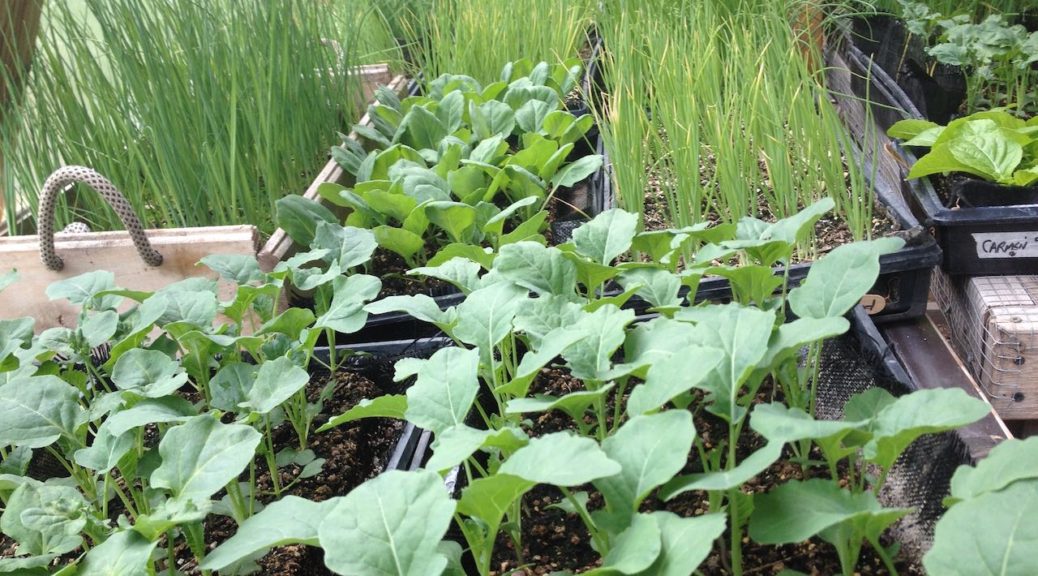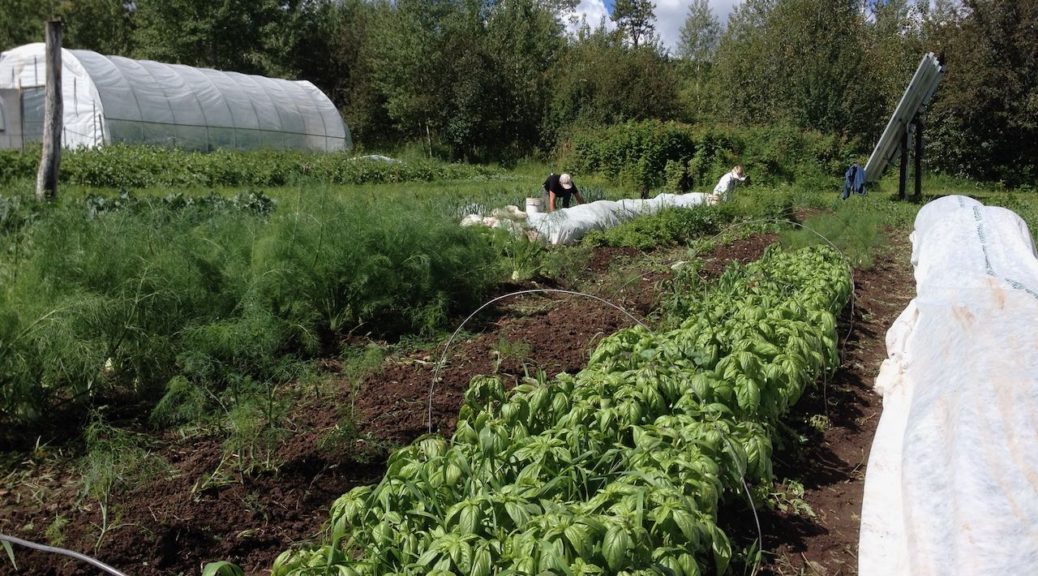Dates: Thursday May 21, Friday May 22, and Saturday May 23
By appointment after the sale.
Hours: Thursday Friday 1–5 p.m. and Saturday 10 a.m.—2 p.m.
Call Sue at 307-413-9115 with questions.
Get your certified organic vegetable, herb, and flower starts at the farm! It’s happening at Snowdrift Farm, 3.5 miles SW of Victor. Find us by going to the “Directions” page on this website. We will be implementing CDC recommendations for social distancing etc., so please stay tuned for details.
Purchase 1 or 100 starts! These vegetable, herb, and flower varieties have been tested on our farm, and do well in our climate (ask us for growing tips!). All varieties are started from seed on the farm, and all soil & most seed is OMRI certified organic. Available for purchase in individual soil blocks* and pots. Come early for best selection. Cash, checks and credit cards accepted.
*Soil Blocks are pressed soil cubes that don’t need any plastic pots, and are ready to plant directly in the garden. The plants suffer no transplant shock with soil blocks.
Our plants will be hardened off and ready to plant in the garden —(for hothouse things like tomatoes, etc, they may or may not be hardened off depending on our weather!). We have an expanded flower selection this year, and you will find varieties for pots, bedding, edible, and cutting flowers.
All our pots are reused thanks to Trail Creek Nursery, valley yogurt eaters, and other individual donors of used pots.
Vegetables: in individual soil blocks* or pots (onions/leeks in bundles of 12)

- Beets*: Red and Golden
- Bok Choi*
- Broccoli*: early & late varieties
- Brussel Sprouts*
- Cabbage*: red & green, Napa
- Cauliflower*: white
- Cucumbers: slicing, pickling
- Kale*: Lacinato, green curly, Red Russian
- Leeks
- Lettuce*: red & green Romaine, green Butterhead, younger red & green crisp leaf
- Onions: Walla-walla, New York early yellow, red
- Pumpkin: New England Pie
- Radicchio*
- Spinach*
- Summer Squash: yellow
- Swiss Chard*
- Winter Squash: Spaghetti
- Zucchini: dark green
for the greenhouse or warm area: in pots
- Eggplant: Listada di Gandia,
- Peppers: Mild (Carmen, King Crimson bell, Antohi Romanian) Hot (Jalapeño, Ancho Poblano, Dragon’s Toe chinese)
- Tomatillo
- Tomatoes, cherry (Sun Gold, Gold Nugget[determinate], Indigo, Black, Red)
- Tomatoes, heirloom (Rose, Cherokee Purple, Brandywine, Pruden’s Purple, Red Pear, Moskvich)
- Tomatoes, regular/hybrid (Dwarf Confetti [red with orange stripes], Celebrity [determinate], Chef’s Choice orange)
Herbs: in individual pots, soil blocks* & 6-pacs
- Basil*, Genovese & Cinnamon [pots and soil blocks available]
- Chervil
- Chives
- Cilantro*
- Dill*
- Fennel*, bulb
- Oregano
- Parsley, Italian flat leaf
- Parsley, triple curled
- Rosemary
- Sage
- Thyme
Flowers: in soil blocks* and individual small pots

- Calendula* varieties: Sunshine Flashback 12-18″, Pacific Blend 12-24″
- Cosmos* varieties: Bright Lights, White, Sensation Mix, Rubenza red
- Dianthus/Sweet William varieties: Electron Blend, Volcano mix
- Dusty Miller ‘New Look’
- Love Lies Bleeding Amaranth
- Marigold*, ‘Mr. Majestic’
- Nasturtium*
- Nicotiana
- Phlox* ‘Art Shades’
- Rudbeckia varieties: Prairie Sun, Indian Summer, Goldilocks
- Snapdragon varieties: Madame Butterfly mix, Defiance red
- Sweet Pea*
- Zinnia* varieties: Aztec Sunset mix (front of border), Jim Baggett’s mix, Giant Cactus mix.


